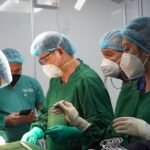What’s New in Pilonidal Surgery? 2025 Techniques and Innovations
This article provides an overview of the latest advancements in pilonidal surgery, focusing on the most recent methods and technologies expected to shape the field in 2025.
Pilonidal surgery has come a long way in the last few years. New treatment alternatives have been developed that speed up recovery and improve results. If you have had the pain of pilonidal cysts, it is important to know that new methods of pilonidal cyst removal surgery have made new treatment options available. As we look at the newest in pilonidal surgery, we’ll show you new methods, improved care after the surgery, and the best ways to keep it from happening again.
The Shift Toward Minimally Invasive Surgery
In the last few years the tendency has moved toward procedures that are less intrusive which means they do less damage to the body and speed up recovery times. In the past removing a pilonidal cyst usually meant making big cuts and taking a long time to heal. Now, though, pilonidal surgery focuses on being precise and without damaging too much tissue. The employment of endoscopic procedures is one of the most fascinating new things. These make it possible to take out the cyst and the tissue around it with considerably smaller cuts.
Endoscopic pilonidal cyst removal surgery has two benefits: it leaves little scarring and greatly lowers the risk of infection. This approach helps patients since it speeds up the healing process and the return to normal activities.
New Approaches in Cyst Removal Surgery
While traditional excision remains a reliable option, flap closure techniques have gained attention for their ability to reduce recurrence rates. This method involves using healthy tissue from around the surgical site to cover the wound after cyst removal. In 2025, we see an even greater emphasis on single-stage flap closures. These closures are a marked improvement over the traditional two-stage procedures, where patients would have to return for another surgery later to close the wound. By employing single-stage methods, we reduce the need for follow-up surgeries, saving both time and discomfort.
Laser treatment is another major factor in pilonidal cyst elimination today. This non-invasive laser cyst removal method reduces infection risk and speeds recovery. Laser treatment for simpler pilonidal cysts is becoming more popular. Lasers’ accuracy and control speed healing and reduce post-surgical pain.
We provide all the Pilo disease knowledge.
Post-Operative Care: The Focus on Healing
Latest pilonidal surgical advances include comprehensive post op care. In recent years doctors have improved post-operative healing strategies to reduce complications and expedite recovery.
After pilonidal cyst excision, most patients should mobilize early. Encourage patients to move about shortly after surgery to boost natural recovery. Patients are also advised to sit in seats that reduce surgery site pressure, improve blood flow, and speed healing.
Wound care and infection control are also more important in 2025. Surgeons provide patients with thorough post op care instructions including bathing dressing changes, and infection monitoring. Recent antimicrobial lotions and wound care treatments also reduce post-surgical problems.
Prevention and Maintenance: The Key to Long-Term Success
Our pilonidal cyst prevention strategy evolves with treatment methods. Recent studies have shown that proper hygiene, hair removal, and lifestyle modifications can lessen the probability of a cyst growing again. Surgery was once the only option.
Hair removal is now critical to preventing pilonidal cyst recurrence. Chronic pilonidal patients are often advised to use laser hair removal. Eliminating hair follicles greatly reduces cyst formation. Delaying cyst formation by bathing after exercise or sitting for long durations is also important.
2025 Innovations in Pilonidal Surgery: What’s Next?
Pilonidal surgery for teens and young adults seeks more innovative methods. Innovative therapies include stem cell treatment. Early investigations suggest stem cells may speed healing and rebuild surgical tissue. Additionally or robotic-assisted surgery may become more popular due to its precision and improved outcomes.
Also more and more people are paying attention to tailored therapies. Surgeons can now customize the operation based on things like the cyst’s size and location and the patient general health. This personalized strategy tries to lower the risks and raise the possibilities of a good outcome.
Conclusion
Pilonidal surgery is changing quickly in 2025. Endoscopic procedures, laser treatment and single stage flap closures are just a few of the new methods that are changing how we remove pilonidal cysts. Better treatment after surgery such as getting up and moving around sooner and taking better care of wounds is speeding up recovery. Patients should expect treatments for pilonidal cysts to be safer, faster and more effective than ever before thanks to better prevention and new ideas that are coming forth.







